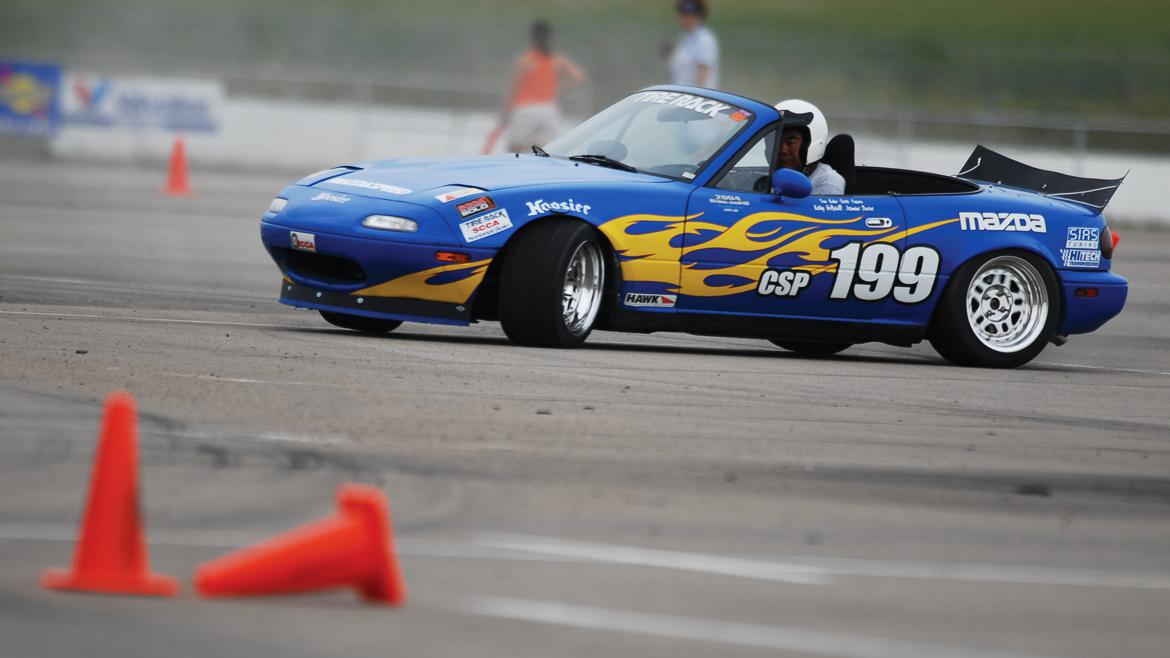Renowned racing engineer Carroll Smith had trouble understanding shock absorbers, so don’t feel bad if you’re in the same boat. When it comes to a car’s handling, shock absorbers are probably the least understood components in the system.
While their inner workings are hidden from view, their impact on performance can be huge. Fortunately, the basics actually aren’t that hard to grasp. We’ve compiled several fundamentals of shock absorber design and operation that should help explain these engineering marvels.
What is a Shock Absorber?
Shock absorbers are misnamed; technically they don’t absorb shocks. These components actually damp the energy of the suspension’s movement by forcing oil through a special piston. Think of shock absorbers as timers that regulate how quickly the suspension moves through its travel, and you’re heading in the right direction. (The gas charge shown in this particular model, by the way, helps prevent the oil from foaming.)
Shock absorbers damp the suspension’s motions by converting the kinetic energy of the up and down movements into heat energy. If there were no shock absorbers, the springs would be allowed to oscillate up and down like bobblehead dolls.

Rebound and Compression
The shock absorber’s shaft and internal piston are designed to move in two directions: in and out. Compression—also known as bump—describes the shock absorber’s behavior when the suspension is compressed. The rebound phase—also known as jounce—occurs when the suspension extends.
Performance-oriented shock absorbers improve handling by better managing how a car’s weight is transferred. They are tuned to improve the timing of the suspension movements and give the driver more control.

Photography Credit: Chris Clark
As a car corners, weight is transferred from the inside wheels to the outside wheels. A shock absorber with soft rebound will allow this weight transfer to happen too quickly. Since some off-the-shelf adjustable dampers only feature adjustable rebound, think about it this way: You’re stiffening the inboard shock absorbers’ rate of rebound, not the outboard shock absorbers’ rate of compression. This rebound control is what determines body roll speed. Important bit of take-home information: Compression holds the tires to the ground, while rebound manages the weight of the car.
Single-adjustable shock absorbers are almost always rebound-only. Double-adjustable shock absorbers can vary both compression and rebound damping. Three- and four-way adjustable shock absorbers will allow you to change high- and low-speed damping characteristics for both rebound and compression.
There are a few different methods for controlling damping. Many units use flexible discs that cover the piston’s orifices to control both low- and high-speed damping. Very high-speed damping is often regulated by allowing maximum flow through the piston holes. For extra high-speed control, some units use remote reservoirs that add another set of pressure valves to the equation. Low-speed damping can be controlled by bleed valves that allow the oil to flow through the damper’s rod and bypass the piston.

Choosing a Suspension Package
Look at the whole suspension as a package when choosing shock absorber valving. An off-the shelf, sport-oriented shock absorber can’t always handle a given spring rate. The final answer depends on a number of factors, including the suspension geometry, available grip, and weight of the car.

Generally speaking, we like a shock with digressive valving: the low-speed rebound damping is quite firm yet the high-speed damping is soft. This allows the car to corner well without losing traction over bumps.
Compression Damping
Compression damping is typically used to maximize the chassis’s grip and control the unsprung weight. Grippy surfaces can require more compression damping, while rain or slick conditions call for very little. An exception can be found in Stock class autocrossing, where some drivers have benefitted from super-stiff compression damping that mimics a high spring rate.

Photography Credit: Rupert Berrington
Don’t be surprised if running extremely stiff shock absorbers on the rear of a car doesn’t always increase oversteer. We’ve found that some front-wheel-drive cars actually become more stable during braking and transitions when we crank up the rear dampers. In these cases, the shock absorber is controlling suspension movement and limiting unwanted toe changes during extreme rebound and compression.

Photography Credit: Rupert Berrington
Say What?
Don’t worry if you didn’t get all of this info on the first read-through. The basics of shock tuning are simple: If a car is understeering, try reducing the front rebound or stiffening the rear rebound. You can also try increasing the rear compression damping.
If the car is oversteering in slaloms and corner entry, decreasing rear rebound can help. Softening the rear compression valving can also provide a couple of benefits: Give it a try if you’re having a hard time getting the power down on a rear-wheel-drive car, or if you need to reduce oversteer on loose or wet surfaces.






 Photography Credit: Rupert Berrington
Photography Credit: Rupert Berrington































